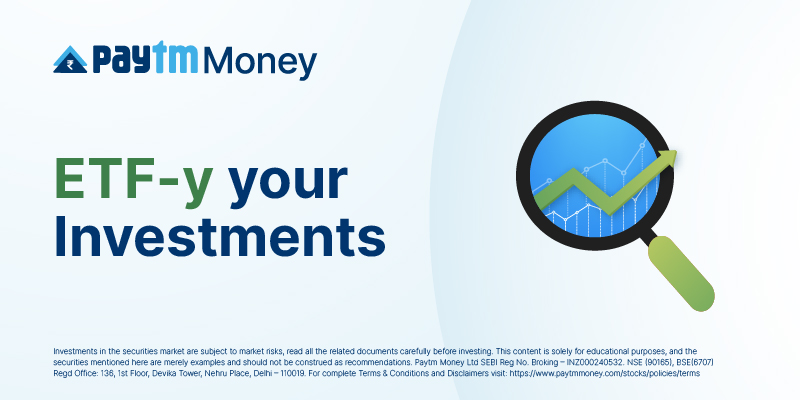Index ETFs: Your Ticket To Effortless Wealth-Building3 min read
Autopilot your investments with Index Investing
How regularly do you check your investments and search for better instruments to invest in? If your answer is anything more than daily or weekly then you most likely have a passive style of saving for the future. In this blog, we will talk about the different styles of investing, the opportunities available for passive investing and how one can get started.
Active vs Passive style
Active and Passive are two different investment management styles. Active management includes frequent buying and selling of securities in order to outperform the market or the benchmark index. Passive management is basically replicating the market performance or benchmark index performance. While active takes more time to follow the market, and perform more research, it also includes higher costs and needs a more hands-on approach towards it. On the other hand, passive investing seeks to match the market returns which in turn does not require as much time, research and cost.
It depends totally on the investors which style of investing they prefer to engage in based on their investment targets, risk appetite, time available and so on. So if you are someone who prefers to invest and forget kind, you know that passive investing is the way forward.
Passive investing options
Passive investing or index investing can be done via the mutual funds route or the exchange-traded funds route. While both try to replicate the performance of the index and can serve as effective vehicles for passive investing, there are some basic differences in their operations that you should be aware of.
- ETFs generally have lower expense ratios compared to their Mutual fund counterparts. Expense ratio is the charge incurred by the AMC to manage the ETF or Mutual Fund. This cost efficiency can have a significant impact on your final portfolio value when you consider long-term investments.
- ETFs can be bought and sold throughout the trading day on exchanges providing flexibility to traders to enter or exit at a preferred price. Mutual funds cannot be traded likewise.
- ETFs provide real-time transparency in the sense that investors can see the underlying stocks that make up the ETFs on a daily basis. Mutual funds generally disclose their investments over a certain period like monthly or quarterly which means that investors may not have real time portfolio visibility.
Source – https://www.amfiindia.com/investor-corner/knowledge-center/etf.html#accordion1
Avenues to Invest in ETF
At Paytm Money, you can search for different ETFs in the stocks section beside the watchlist. You sort based on past returns or filter based on the underlying instrument type like Equity, Debt, Gold etc.

Once you find your ETF to invest in, you can place your order in real time and start tracking PnL in your portfolio.
If you wish to invest small sums of money in an ETF over a long time, you can even start an SIP in an ETF
Disclaimer: Investments in the securities market are subject to market risks, read all the related documents carefully before investing. This content is purely for information purpose only and in no way to be considered as an advice or recommendation. The securities are quoted as an example and not as a recommendation. Brokerage will not exceed the SEBI prescribed limit. Paytm Money Ltd SEBI Reg No. Broking – INZ000240532. NSE (90165), BSE(6707) Regd Office: 136, 1st Floor, Devika Tower, Nehru Place, Delhi – 110019. s For more details, please visit: https://www.paytmmoney.com.




